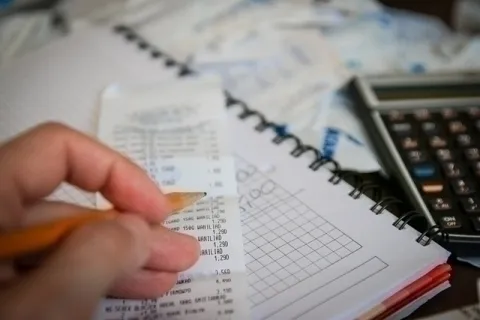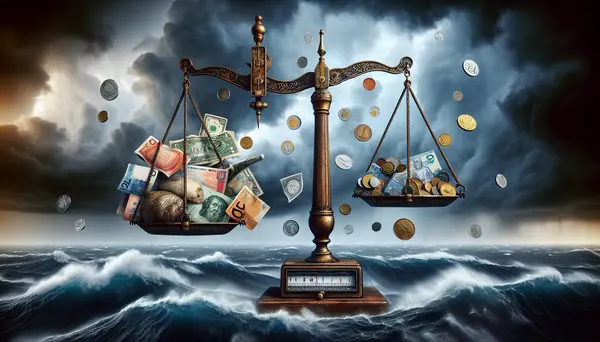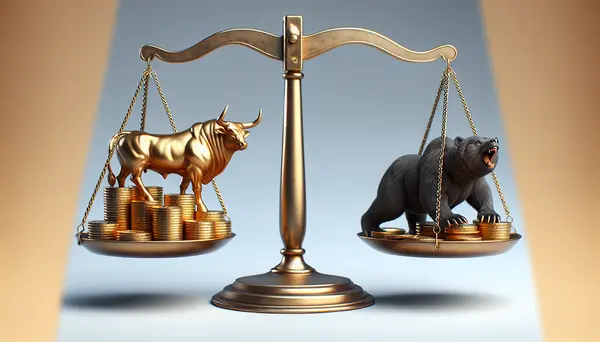- Identify candlestick formations to predict potential market movements by analyzing the size and position of the candles.
- Examine the context of the patterns within the trend and use them alongside other indicators to confirm trade signals.
- Consider the volume accompanying the candlestick pattern for a stronger indication of buyer or seller strength.
So, I've been spending a good amount of time reading about technical analysis and stuff and started getting into this whole candlestick chart patterns thing. I honestly find it a little bit hard to wrap my head around all the different shapes and what they're supposed to mean or predict. You know, like dojis, hammers and whatnot. There seem to be conflicting explanations about the same patterns online.
Anyway, given that so many of you seem to be wizzes at this, I thought I'd just throw this out there. I'm curious to know how you peeps interpret these patterns in your technical analyses? More specifically, when you look at a candlestick pattern, what's the process that goes on in your head? How do you decide it's bullish, bearish or just noise?
And how do you use them to decide to buy, to sell, or just to hold? Would be interesting to see the different approaches you guys take based on your experiences. Just be honest, don't feel like you gotta be a guru or something. I'm sure we're all here to learn, right?
Guess you guys are missing the secret sauce - coffee! Nothing makes sense in my analysis until I've had my third cup. Although, I can't promise it makes more sense after that either!
Definitely an intriguing discussion! One thing that hasn't been touched upon yet is the importance of considering overall market trends alongside individual candlestick patterns. It's like trying to get the whole picture, not just a snapshot.
Interesting points all around, but I have to admit, I'm a bit skeptical. I mean, isn't it possible that we're just seeing patterns because we want to see them? Like seeing shapes in clouds? Honestly, how often do these patterns really hold true versus existing by chance alone in a volatile market? Although I understand the theory, I still can't help but wonder if we're not just telling ourselves reassuring stories to make sense of the chaos. How do you ensure you're not being misled by overcomplicating your analysis with perceived patterns? There's a bunch of other factors at play in the market too.
No doubt, the market can be a wild beast at times. Trying to tame it can seem like an impossible task. But think about it, even if these patterns aren't a foolproof guide, they can still offer us some structure in the chaos, right? Kind of like a compass in a storm. And yes, while it's true that there are a bazillion other factors at play, isn't it better to have some kind of tool in your toolbelt than going in blind? Just because it's not a magic crystal ball that sings "Buy now!" or "Sell now!" doesn't mean it's not useful. It's all about stacking the odds in your favor, however slightly, because in the game of stocks, every little edge counts. I mean, wouldn’t we all be a little lost in this jungle without some help? Anyways, I'd love to hear how you guys use other factors or indicators alongside candlestick analysis to make your trading decisions. Do you favor certain ones more and why? Or is it a mix and match scenario?
Don't get too hung up on patterns. Remember, they're just one piece of the puzzle. Keep the broader context of the market in mind too.
I try to stay grounded by checking my assumptions continuously against real-time data. Besides, diversifying one's assets can be a good shield against unfavourable turns. Nothing like spreading your eggs in different baskets to minimize the risk.
Well, this whole thing does seem to be a bit of a guessing game, doesn't it? While patterns may point us in a certain direction, at the end of the day, aren't we just banking on luck? And isn't that the opposite of the calculated, scientific approach we're supposed to be taking here? Every time I make a call based on a pattern, I can't help but feel like I'm throwing a dart blindfolded and hoping for the best. So, how do you folks reconcile that? How much of your decision making processes are based on recognizing patterns vs on other types of analyses or even gut feelings? Does anyone else feel like they're just rolling the dice or am I the only one?
Just remember, even the pros strike out sometimes. Roll with the punches!
Sometimes, it's just about playing the odds and hoping for the best. At the end of the day, isn't that the thrill of the game?
Volatility is the name of the game, and intuition often plays a role in navigating it. Curious to hear how others might blend instinct with strategy.
You mix guts with smarts for the win, right? How do you balance that out?
Consider using quantitative analysis as a counterbalance to pattern-based judgments. By integrating numerical data and statistical models, you might reduce some guesswork and enhance your strategy’s robustness. How do you all incorporate stats into your trading decisions?
- What is the process of preparing for a regulatory audit in your trading operations? 7
- How can I manage risk when trading? 10
- How can meditation help in improving trading psychology? 6
- How does central bank policy impact currency trading? 6
- What role does patience play in your trading strategy? 11
- How do you determine when to exit a trade, and how does emotion influence this decision? 9
- What is the role of consumer sentiment in market analysis? 4
- How does the Personal Consumption Expenditures (PCE) data impact the market? 4
- How does GDP growth relate to market performance? 5
- How can I analyze a company's competitive advantage? 3
- How do you navigate the regulations surrounding short selling? 320
- What are Forex trading and its basics? 290
- How does seasonality impact market analysis? 255
- How do you manage stress during volatile market conditions? 219
- How does a stop-loss order work in trading? 205
- What tax implications should I consider when trading? 200
- What are the best platforms for online trading? 194
- What's the difference between day trading and long-term investing? 191
- What is swing trading and how is it different from day trading? 185
- How do you avoid letting past trading successes or failures impact your future decisions? 181

We have compared the best crypto exchanges for you. Just take a look at our free crypto exchange provider comparison.

We have compared the leading crypto tax tool providers for you. Check out our free crypto tax tool provider comparison.
Blog Posts | Current

Mastering Your Mindset: The Key to Successful Trading Psychology
As a trader, your success in the markets depends not only on your technical skills and market knowledge, but also...

The 5 most common mistakes made by crypto traders
The 5 most common mistakes made by crypto traders Crypto trading is becoming increasingly popular, but there is great potential to...

Protect Your Capital with Effective Risk Management in Trading
Risk Management As a beginner trader, you're likely eager to dive into the markets and start making some profits. However, before...

Don't Fall for the Hype: The Risks of Using Trading Bots
As a beginner trader, you may have come across the idea of using trading bots to automate your trading and...

The Trader's Dilemma: Dealing with Losses in Trading
As a trader, losses are an inevitable part of the game. Even the most successful traders will experience losing trades...

Automating Your Trades: The Power of Trading Algorithms
As an avid trader, you've probably heard the buzz around trading algorithms. But what are they, and how can they...

From Chaos to Consistency: Why a Trading Setup is Key to Success
Trading is an exciting and rewarding way to make money, but it can also be overwhelming for beginners. One of...

Maximizing Returns: The Importance of Rebalancing Your Portfolio
Rebalancing your portfolio is an important part of any long-term investment strategy. It involves periodically adjusting your portfolio's asset allocation...

Different Cost Average Trading Strategies
Cost Average Trading is one of the most popular trading strategies used by investors to minimize their risk and maximize...

Breaking Down the Buzzword: What is a Trading Bloc?
Are you familiar with the term "trading bloc"? It may sound complicated, but it's actually a concept that can have...
